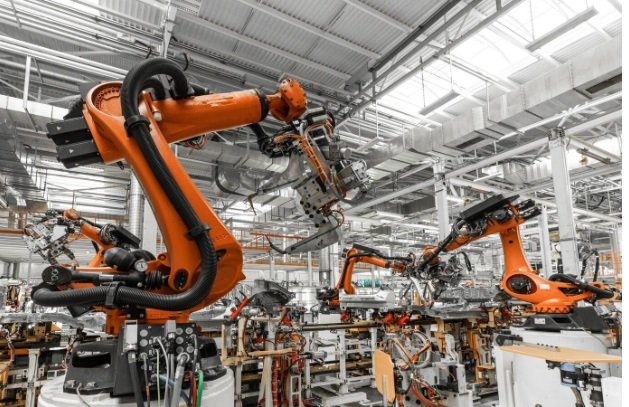Discover 🔍 the best HMI manufacturers! Experience advanced technology 🖥️ for interactive interfaces. Lead the tech revolution! 🚀
HMI, or Human-Machine Interface, plays a vital role in technologically driven industries. It presents essential information about machine processes to the human operator through graphic displays, allowing for real-time interaction with machines and automation systems. General functions include input-output data handling, system monitoring, and troubleshooting. Utilized across various platforms like industrial automation (SCADA), home automation (domotics), and vehicle-operated systems (IVIS), it simplifies complex operations enhancing efficiency while reducing errors or accidents linked with traditional manual controls. Its evolution includes touch screens and voice commands boosting user-friendliness and accessibility of digital devices. Graphical presentations make understanding easier for operators without technical expertise.
Advanced technology is vital for interactive interfaces as it significantly enhances user experience and leads to increased user engagement. From responsive design, and AI-driven personalisation to voice recognition functions, contemporary tech advancements contribute to more intuitive interactions, bridging the gap between users and devices. Superior technology promotes efficient data processing that improves the real-time response behaviours of systems while ensuring ultimate convenience for users. Thus equipping interfaces with novel technologies can facilitate seamless operations, providing a unique handle in navigating this digital era smoothly. For HMI manufacturing companies, any deficiency could result in frustration giving competitors an edge thus jeopardizing a business’ compatibility within its niche sector.
Understanding HMI Technology
Human-machine interface (HMI) technology is a high-tech interactive interface that allows communication between humans and machines. HMI includes any device or software that permits human users to interact with computer systems or advanced machinery, often employed in industrial contexts where rigorous controls are required. Its functionality elucidates complex computing operations by translating them into simple graphical representations for intuitive handling. Offering real-time data management, process monitoring, and operational troubleshooting; HMI greatly enhances user efficiency and safety. This interaction methodology takes different forms such as touch screens, control panels, voice command systems etc., revolutionizing the arenas of automation and process control technology.
Human Machine Interface (HMI) has evolved significantly since its inception in the 1940s with basic push-button interfaces. The 1970s brought text-based GUI, while point-and-click HMIs emerged during the 1980s following advances in computer technology. Industrial adoption increased with SCADA systems development. In the late ’90s, web-based HMI allowed remote process control and supervision over a network or Internet. Further advancements enabled the integration of AR/VR and AI for a futuristic approach to machine control via gestures or voice commands by the late 2010s. Thus, from basic buttons to complex interactive displays, HMI continues evolving based on user needs and advancing technologies.
Advanced HMI (Human Machine Interaction) technology offers numerous benefits promoting efficiency and productivity. It streamlines the industrial process, enabling real-time monitoring of operations, resulting in reduced errors and enhanced performance. Facility management is simplified by virtualizing controls, reducing manual labor, and thereby saving time. Additionally, advanced HMI facilitates predictive maintenance through the timely detection of potential equipment failures hence preventing costly downtime. Troubleshooting becomes smoother as operators can quickly identify issues. The interaction between users and machinery evolves towards more intuitive pathways with graphic visuals increasing user-friendliness. Conclusively, Advanced HMI technologies facilitate an efficient collaborative environment leading to improved operational productivity.
Interactive interfaces are invaluable in modern industries, enhancing productivity and customer experience significantly. They allow real-time data exchange, automated processes, and clear communication channels between operations and management teams. Moreover, user-friendly interfaces enhance the rate of technology adoption among employees further leading to increased efficiency. In a competitive business landscape where customer expectations are persistently increasing, interactive interfaces also offer personalized user experiences to meet these demands effectively. Therefore it’s evident that interactive interfacings essentially act as conduits driving streamlined workflows throughout an organization which potentially foster innovation and growth distinguished greatly in today’s dynamic information age.
Interactive interfaces are user-facing elements designed to convey information and facilitate interaction between a user and a system. This concept centralizes around direct engagement, enabling systems to respond informatively and intuitively according to the specific inputs given by users. Interactive interfaces transfer commands from humans to computers in an efficient way while enhancing the overall user experience. It encompasses websites, applications, or even physical devices; mostly constitutes buttons, links, forms etc., facilitating users’ decisions consequential in triggering various actions like data indexation or generating feedback based on the current state of the interface.
Interactive interfaces significantly enhance user experience in various sectors, including education, healthcare, retail and tech. They foster improved engagement by enabling users to effectively communicate with digital platforms across multiple channels. They’ve allowed teachers to visually illustrate complex concepts, augmented patient-care facilities for doctors via virtual consultations or data collection from wearables, revolutionized e-commerce sites through AR/VR capabilities led customers on immersive shopping tours, and enabled developers to streamline processes using API integrations. Simply put—reflecting their broad-ranging impact—the emergence of such intuitive interactive UI/UX has contributed massively towards accelerating the digital transformation wave sweeping 21st-century societies.
Case studies demonstrate the efficacy of advanced Human-Machine Interface (HMI) technology in multiple sectors. For instance, automotive companies improved safety by integrating HMI technology into voice recognition systems, minimizing driver distraction. In healthcare, HMIs enhance patient monitoring and data tracking, reducing errors significantly. Factories report increased efficiency with adaptive HMI systems streamlining manufacturing processes by predicting and preventing machine malfunctions through real-time analytics. Meanwhile, energy firms utilise these interfaces for superior control over complex distribution systems – leading to energy savings. These examples indicate how cutting-edge HMI technology has been pivotal in driving performance improvements across diverse industries.

FAQs
What is HMI in manufacturing?
HMI, or Human-Machine Interface, in manufacturing, refers to the digital systems used for communication between humans and machines. It may include computers, keypad devices, touchscreen panels and software programs that transform complex machinery data into understandable information for operators. Through HMI systems, users can interact with equipment’s operational details such as performance metrics and control actions. HMI improves efficiency by intuitively visualizing processes, thus facilitating decision-making about production variables and malfunctions quickly. Additionally, it enhances safety by providing alarms of system errors or unusual conditions instantly. Hence, properly designed HMI is central to modern industrial automation strategies.
What are the brands of HMI?
Human Machine Interface (HMI) technology features several key players in its AAA manufacturing sector. Renowned brands include Siemens, renowned for their Simatic HMI series; Rockwell Automation, producers of Allen Bradley HMIs; Schneider Electric offering Magelis range of HMIs; Mitsubishi, providing GOT2000 series touch panels and Omron featuring NB Series units. Eurotherm by Schneider Electric offers temperature controllers with a graphical display. ABB’s CP600-Pro products offer premium HMI solutions while Beijer Electronics provide X2 control panels accessible through the iX software platform. Honeywell’s Experion HS provides an efficient direct interface to meet global preparedness standards.
Which HMI is best?
Choosing the best Human-Machine Interface (HMI) depends on specific requirements and objectives. For high-end applications requiring advanced features, comprehensive data analysis and support for various communication protocols, Rockwell Automation’s FactoryTalk is a good choice. Siemens’ WinCC provides versatility with scalability options making it ideal for small to large industries. However, affordability and ease of use can make HMI offerings from Weintek or Delta Electronics preferable for SMEs or beginners in the automation field. Ultimately, determining “best” involves balancing functional capability needs against resources like budget and expertise – suggesting that optimum suitability may vary per use case scenario rather than universally definitive superiority.
What is an example of an HMI in industry?
A prominent example of a Human-Machine Interface (HMI) in industry is used within manufacturing lines: the supervisory control and data acquisition (SCADA) system. SCADA allows operators to monitor and manage industrial operations remotely via an interactive software interface. It displays real-time data about machine performance, enables troubleshooting, controls processes, adjusts parameters like temperature or pressure and even executes commands like stopping production during emergencies. Thus, easing up the procedure to resolve issues effectively while enhancing productivity by reducing downtime – depicting how crucial HMI can be in streamlining industrial operations.



